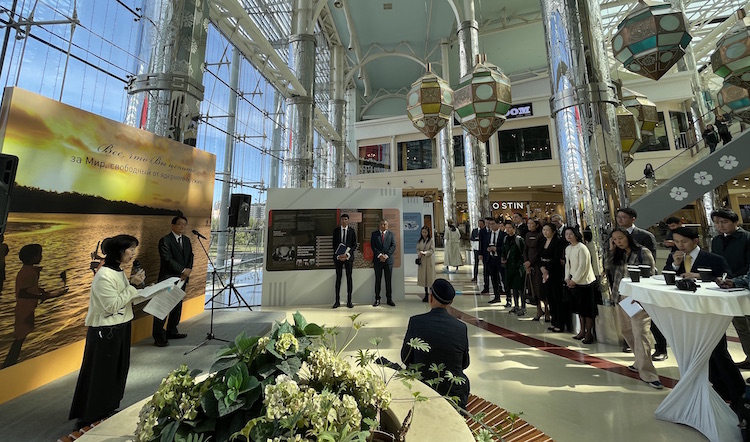By Kalinga Seneviratne
NUR-SULTAN, Kazakhstan (IDN) — An exhibition that opened at Keruen Mall, an upmarket shopping centre here on September 16 and continues until the end of the month, uses a novel method to reach out to young people with the message of the dangers of nuclear weapons.
The exhibition depicts over 70 years of nuclear history from the Hiroshima explosion through to today, using photographs, illustrations, and graphs that show the devastating effects of nuclear weaponry on communities.
Soka Gakkai international (SGI), a Japanese Buddhist non-governmental organization (NGO) that promotes peace, culture, and education, organized the exhibition along with the Nobel laureate International Campaign to Abolish Nuclear Weapons (ICAN), and local NGO, the Kazakh Center for International Security and Policy.
The exhibition was first shown in Hiroshima, Japan in 2012 and has since been travelled to more than 90 cities in 21 countries around the globe.
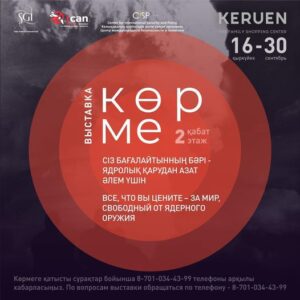
“Kazakhstan was home to nuclear test sites, including the Semipalatinsk Test Site under the Soviet Union, and it is a country of many people who suffered greatly from consequences of nuclear weapon tests,” SGI Director General for Peace and Global Issues Hirotsugu Terasaki told IDN.
“In view of the situation surrounding nuclear weapons today, many people in Kazakhstan share the same strong desire for nuclear disarmament like many of Japanese people who experienced atomic bombings on Hiroshima and Nagasaki.”
In a welcoming speech at the opening ceremony, Deputy Director of the Department for International Security of the Ministry of Foreign Affairs, Arman Baisuanov, said Kazakhstan had suffered the impact of some 450 nuclear tests on its soil during the Soviet era between 1949 to 1989. These tests were conducted underground and in the air, affecting about 1.5 million people.
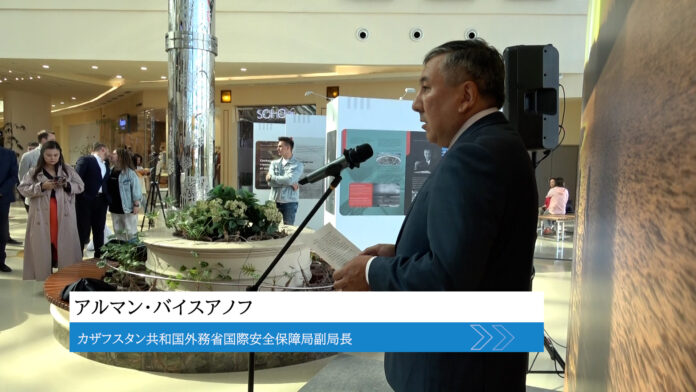
“A world free of nuclear weapons is central to our foreign policy,” he said, pointing out that in 2019 Kazakhstan had ratified the Treaty on the Prohibition of Nuclear Weapons. “Kazakhstan is leading a global coalition to build a movement to ban nuclear weapons.”
Presented on some 20 panels with colourful, eye-catching graphics, under the theme ‘Everything You Treasure – For a World Free From Nuclear Weapons’, the exhibition is designed to educate the youth in particular to get them out of their apathy on the issue. The exhibition panels answer questions on whether nuclear weapons really protect what we hold dear, what are the problems caused by nuclear weapons—humanitarian, environmental, medical, and economic—as well as what we want our future to be.
“Younger Kazakhstanis haven’t experienced these nuclear testing sites. We are learning from this type of exhibition that nuclear testing and nuclear weapons are not tolerable,” Madiyar Aiyp, a young Kazakhstani who attended the opening ceremony, told IDN. “We should all work together as a joint human population so that we can resolve any problems without going through to nuke each other.”
A special guest at the opening was Bolatbek Baltabek, a 63-year-old second-generation victim of nuclear tests who is now an international anti-nuclear movement activist. He spoke about the tragic consequences the nuclear tests had on him and his family.
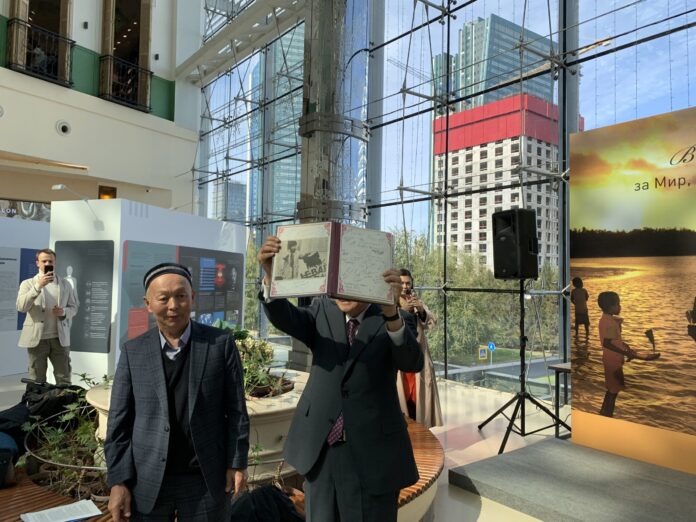
Mr Baltabek was a child when the Soviet Union tested the atomic bomb near his home village Sarzhal in eastern Kazakhstan, in what came to be known as Semey polygon. He related that during the summer, his father and mother lived in one room, and the rest of the rooms were occupied by Soviet military personnel who came to conduct the nuclear tests.
“When we were children, when the helicopters came, we used to run happily saying ‘now there will be a test’. At that time, we did not know the tests were dangerous,” Mr Baltabek said.
“Later, when we grew up, the death of our friends, relatives and acquaintances from unknown diseases used to instil fear in our childhood hearts. If we asked our elders, they will simply say ‘disease of the landfill’, and we could understand looking at their sad eyes that this topic should not be discussed,” he added.
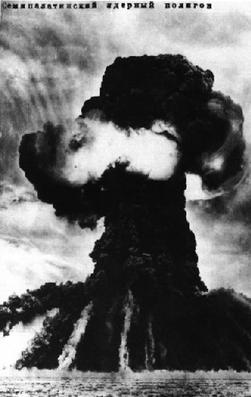
Mr Baltabek narrated how the Soviet government took them in groups to the city of Semipalatinsk and conducted tests for ten days. They did not give any information on the test results, but he thinks their community became the object of an experiment. However, the government never gave any special assistance to those impacted by the testing.
“Currently, the diseases caused by the tests are beginning to be seen in our children and grandchildren, who did not see the landfill explosions,” notes Mr Baltabek, adding that his granddaughter is sick with blood disease and is now on the disability register. “I’m asking participants of this forum, including those from Japan, to help my granddaughter recover from this illness.”
Foreign policy analyst Iskander Akylbayev argued that, though the polygon was closed at the end of the Soviet Union, problems have not come to an end. The impact of nuclear tests “can be passed from one generation to another”. He added: “They are suffering from socio-economic consequences such as (contaminated) drinking water, (lack of) health facilities or have to travel to cities for treatment. So, we must put emphasis on social-economic issues as well,” he told IDN.
Mr Akylbayev feels that this exhibition needs to be taken across the country because “we are in a dangerous time where the Cold War thinking is coming back and the chance of using nuclear weapons is on the agenda as well. It is very important to learn from past mistakes”.
“The exhibition has taken place in more than 20 countries around the world, and we would like to continue to hold it in other regions translating (the panels) in many languages,” Mr Terasaki said. “This exhibition is different from ordinary exhibitions calling for the abolition of nuclear weapons. The key point is that the exhibition offers various perspectives on nuclear weapons.”
Japanese language teacher Shigenobu Masujima, who has lived in Kazakhstan for 15 years, argued that since both Japan and Kazakhstan have experienced the horrors of nuclear weapons, “unless we as the atom-bombed nations, convey the horror of nuclear weapons to the world, people will not understand. Therefore, we must take the initiative in this regard”.
“Many people do not have a clear image of nuclear weapons because they do not exist close to us,” noted Mr Terasaki. “For this reason, the issue of nuclear weapons tends to be hidden from our daily lives. We try to show our audience that nuclear weapons are not something irrelevant to us, but rather they deeply influence our lives and ways of living.” [IDN-InDepthNews – 25 September 2022]
Top Photo: SGI Director General for Peace and Global Issues Hirotsugu Terasaki (left) opening the exhibition. Credit: Katsuhiro Asagiri | INPS-IDN Multimedia Director.
IDN is the flagship agency of the Non-profit International Press Syndicate.
This article was produced as a part of the joint media project between The Non-profit International Press Syndicate Group and Soka Gakkai International in Consultative Status with ECOSOC on 25 September 2022.


